In collaboration with Wageningen University & Research and Compassionate Cultivation, Fluence is proud to announce the findings of a series of groundbreaking photobiology research studies examining how light spectra affect cannabis growth and development.
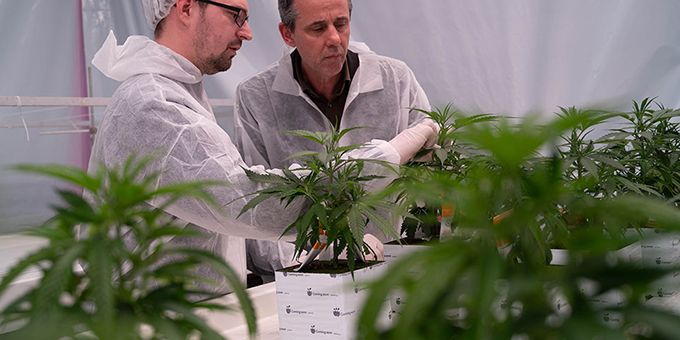 10 Groundbreaking Insights From the Latest Research on Light Spectra for Cannabis
10 Groundbreaking Insights From the Latest Research on Light Spectra for Cannabis

Article from | FLUENCE by Osram
These studies are the first of their kind and provide key insights for commercial cannabis growers looking to maximize production, improve product quality and optimize efficiencies in their farms.
Unlocking the Secrets of Photobiology in Cannabis
Cannabis is a high value crop in commercial agriculture, but it currently has very limited scientific documentation to guide its commercialization. Because of this, the Fluence research team has been focused on discovering insights about cannabis that are immediately actionable. Research was conducted in two studies focused on how lighting can be used to further enhance the desirable aspects of cannabis in commercial greenhouse and indoor settings.
Each experiment was carefully designed to examine the effects of broad spectrum white light, broad spectrum pink light and narrow band red/blue light deployed on the VYPR 3p Series. Each light treatment is distinct in spectral composition. The purpose of examining each of these treatments is to further understand which light spectra is most appropriate for corresponding greenhouse or indoor environments for Type I cannabis (high in THC), Type III cannabis (high in CBD) and Type II cannabis (a balance of THC and CBD).
Figure 1: Fluence top light spectra deployed in research studies.
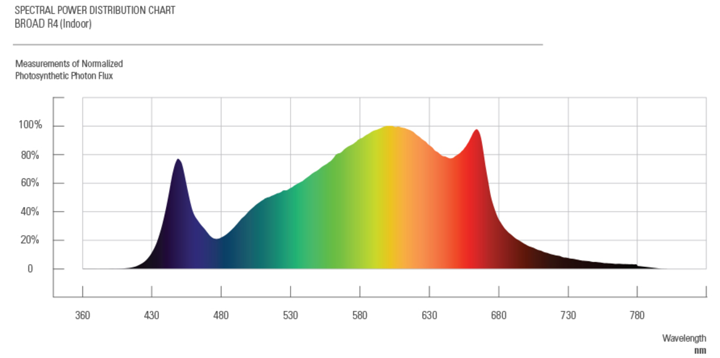
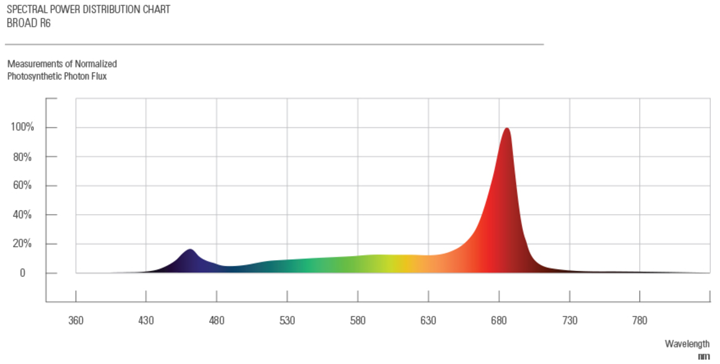
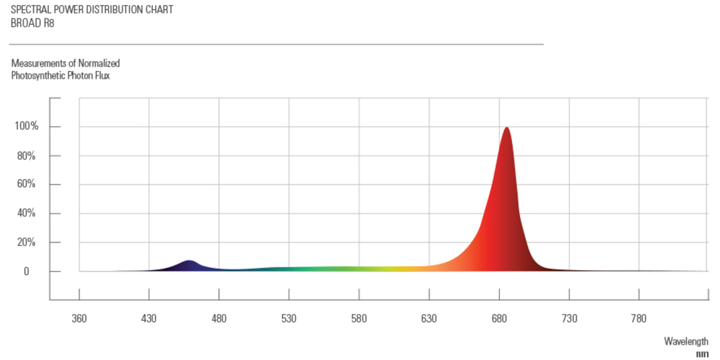
Through these studies, Fluence was able to determine ten key insights in manipulating the development of cannabis that can have a profound effect on commercial cannabis production when applied correctly:
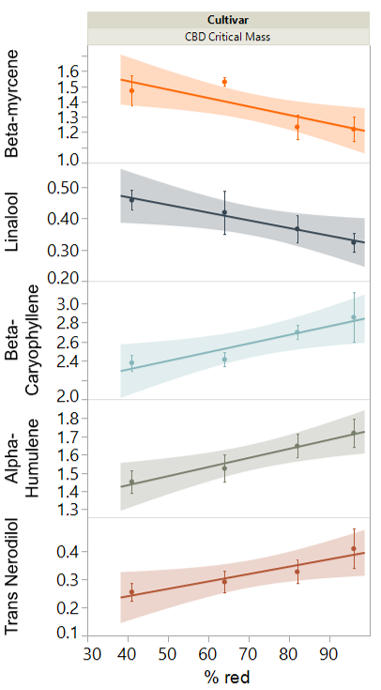
Figure 2: Red light impact on terpene production
- First and foremost, Fluence verified that in some cultivars, a lower percentage of red light correlates with an increase in cannabinoid concentrations.
- Even more interesting, red light can be used to manipulate terpene ratios in cannabis (see Figure 2).
- At low supplemental light intensities in a greenhouse, all trialed Fluence spectra achieve comparable yields.
- In an indoor setting – where light sources are emitting at higher intensities – Broad White R4 and R8 spectra yielded higher than R6.
- In indoor settings, R4 yielded up to 17% higher than the next best spectral solution in certain cultivars of Type I High THC cannabis.
- When considering indoor settings, R4 consistently produced higher yields, and has the added benefit of not causing photobleaching, whereas spectra like R8, which have a considerably higher fraction of red light, induce photobleaching.
- Across both types of environments, spectrum sensitivity is cultivar dependent.
- Finally, when applying these insights into a grower’s environment, R4 and R8 lighting can be deployed to significantly increase the grower’s estimated gross margin.
These insights are quite significant because they can be immediately leveraged by growers looking to produce specific chemical and morphological effects in their cannabis crops. Across both studies, Fluence was able to validate the fact that light spectra can have a significant impact on your cannabis crops, whether they are being grown indoors or in a greenhouse environment.
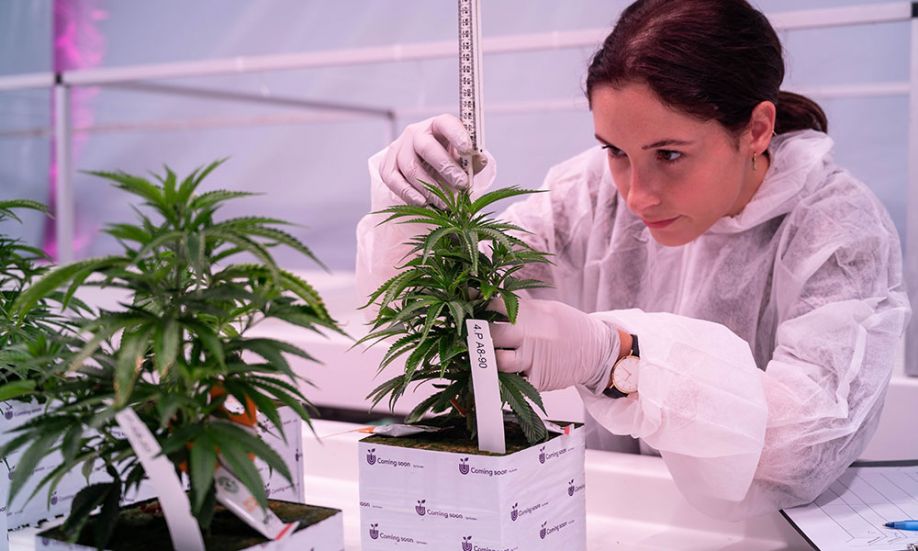
What Does This Mean for Your Grow?
A primary benefit of the webinar is how growers were able to address their questions in real-time, learning exactly how they can leverage Fluence’s research to impact plant response and productivity in their current environments. A few examples of questions asked during the webinar include:
Q: What is the right spectrum for my cannabis crops?
A: This is highly dependent on your cultivation goals. As evidenced by the results above, cannabinoids, terpenes and yield are all affected by spectra choice, to varying degrees. Whether you are looking to sell your crops as flower or extract, Fluence can help you determine the right spectra to maximize your investment into lighting.
Q: Should I be using UV or far-red lighting?
A: While there is a lot of interest outside of PAR, there is a clear misconception of the value of these light sources and their impact on yield or plant chemistry. Far-red light is good for eliciting a shade avoidance response, and it will give cannabis plants a larger canopy and stretch out the plants, which can be good for cultivars that have dense foliage. The Fluence research team will discuss this topic in more detail in an upcoming webinar. Register here.
Q: What is the impact on plant morphology between spectra?
A: In indoor settings, no noticeable evidence of stretch occurred. However, in the greenhouse environment, there was significant canopy expansion under the R8 light treatment. Our working theory is that a lower potting density in the greenhouse environment enabled the plants to spread and stretch more in that study. In the indoor study, photobleaching was also observed under spectra containing higher levels of red-light, negatively impacting market value of the harvested bud.
Q: What is the appropriate light level for cannabis crops in my region?
A: This study utilized a PPFD of 480-500 in the greenhouse environment and a PPFD of 1,100 in the indoor environment. We have seen many growers push light levels well beyond these metrics with success but the tolerance for high light intensity can be cultivar dependent. If you are considering supplemental lighting in a greenhouse it is always best to measure the transmissivity of your greenhouse and consult with a Fluence specialist to develop a lighting strategy for your targeted PPFD based on your annual DLI.
A number of other questions including the reasons why photobleaching occurs, the importance of DLI measurements, how light affects plant morphology and a deep-dive into how each experiment was conducted were also addressed during the webinar.
The content & opinions in this article are the author’s and do not necessarily represent the views of AgriTechTomorrow
Comments (0)
This post does not have any comments. Be the first to leave a comment below.
Featured Product

